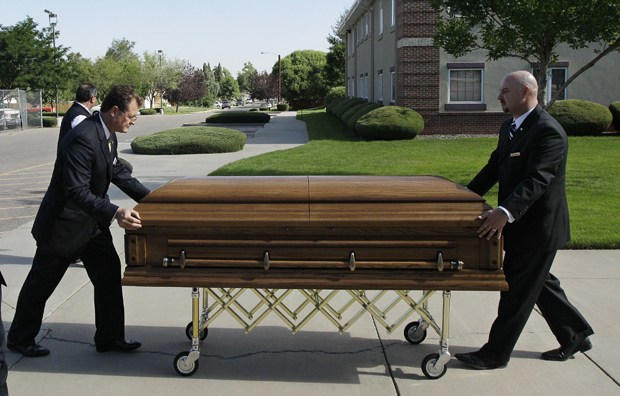Violent movies: Addictive as trans fats and just as dangerous
By Milos Stehlik

Violent movies: Addictive as trans fats and just as dangerous
By Milos Stehlik
Movies are the Rorschach test of our dreams. Movie theaters are the cocoons in which these dreams are enabled. This dream relationship was brutally ruptured by the Aurora, Colo., massacre. A dozen people died, dozens more were injured. For millions of others, the movie experience will never be the same.
Much of the news coverage quickly turned to stereotype. We’ve seen lone gunmen commit violent acts before. So James Holmes, the shooting suspect, was a nerd, a loner, had no friends and sometimes had weird lights in his apartment. He came from a “normal” family, so the reporters desperately dug through every bit of James Holmes’s past for aberrant clues. He had to be made quickly into a nutcase – someone who is different and very much unlike us. Pop psychology to the rescue: The news media are trying to rationalize the Aurora tragedy as another movie.
Holmes statement that he was “The Joker” as he emptied his ammunition into the full movie house was perfectly framed by the victimized audience, many wearing Batman-franchise costume. This staging was set up by the now-common practice of trying to maximize the critical opening weekend gross by a nationwide opening of the film at midnight, marketed as a global “event.” Armed with weapons that no sane American needs to possess, Holmes seized a unique opportunity.
He was not original. In the wake of the shootings, the very same studio – Warner Brothers – quickly scrambled to pull a trailer off movie screens and the internet for Gangster Squad. Scheduled for release on September 7th, the film stars Sean Penn and Ryan Gosling. In the trailer and the movie (the opening now re-scheduled for January, 2013), gangsters use automatic weapons to fire through the movie screen at an audience sitting inside Hollywood’s Grauman’s Chinese Theater.
What is the responsibility of our blood-soaked movie culture for consuming – to the tune of hundreds of millions of dollars – such scenarios?
A shaken young couple, in a television interview, had survived the Aurora, Colo. movie massacre and saved their 4-month-old baby. They were, by all measures, heroic and lucky. But what were they doing with a 4-month-old baby at a screening of an intense, violent, loud film starting at midnight? Even if that child was not watching, the high-intensity soundtrack would be disturbing enough.
Clearly, the movie rating system, a bad idea to begin with, never worked. Even if theaters stuck to the policy, every kid knows how to sneak from one movie in a multiplex into another. The sham of the rating system is a ruse for expensive, special-effects-laden films which depend on violent action for their dramaturgy. Movie violence is expedient and it is addictive, it sells, and because it does not depend on nuances of character or dialogue, it is a global product. Over 68 percent of Hollywood studios’ box office revenue comes from overseas. The violent action, special effects and rapid cutting have intensified in recent years because producers are pushed by competition from video games – thus the dividing line between video games and movies has blurred. Games become movies, movies become games, sometimes helped with pre-existing, well-established franchises of super-action-hero comic book characters.
Americans and American youth are now as addicted to “action” films as they are to trans fats. Both addictions are equally hard to quit.
The question in the wake of the Aurora movie massacre should be, “What kind of America do we want?” An America in which we drug attention-deficit-disorder-diagnosed kids in response to their diet of sugar, video games and violent films? An America in which, as the Texas Representative Louie Gohmert suggested, every American should be allowed to carry a concealed weapon into public places like movie theaters for “just-in-case” scenarios? An America de-sensitized to human suffering and pain, because of the numbing effect of movie violence which, no matter how gross, is not, after all, real?
The issues which underlie the Aurora tragedy should not be swept under the carpet by “adding more security” or feeling more at ease by learning that the perpetrator, James Holmes, may be criminally insane. We may know nothing about him at this early stage, but we do know he forged a link with the movies: he chose The Dark Knight Rises screening to commit the crime.
The Aurora tragedy could be a wake-up call to re-examining gun laws, our violent culture, and the central role that movies play in our lives. Rather than emulating other failed campaigns like the “Say No” campaign against drugs, we need to engage young people with movies based on humanistic values and teach them to think critically. Given the chance and opportunity, kids eagerly embrace animation or documentary film, creating work which often tackles important issues like global warming. We need to save their future so they can save the planet we’ve almost destroyed.